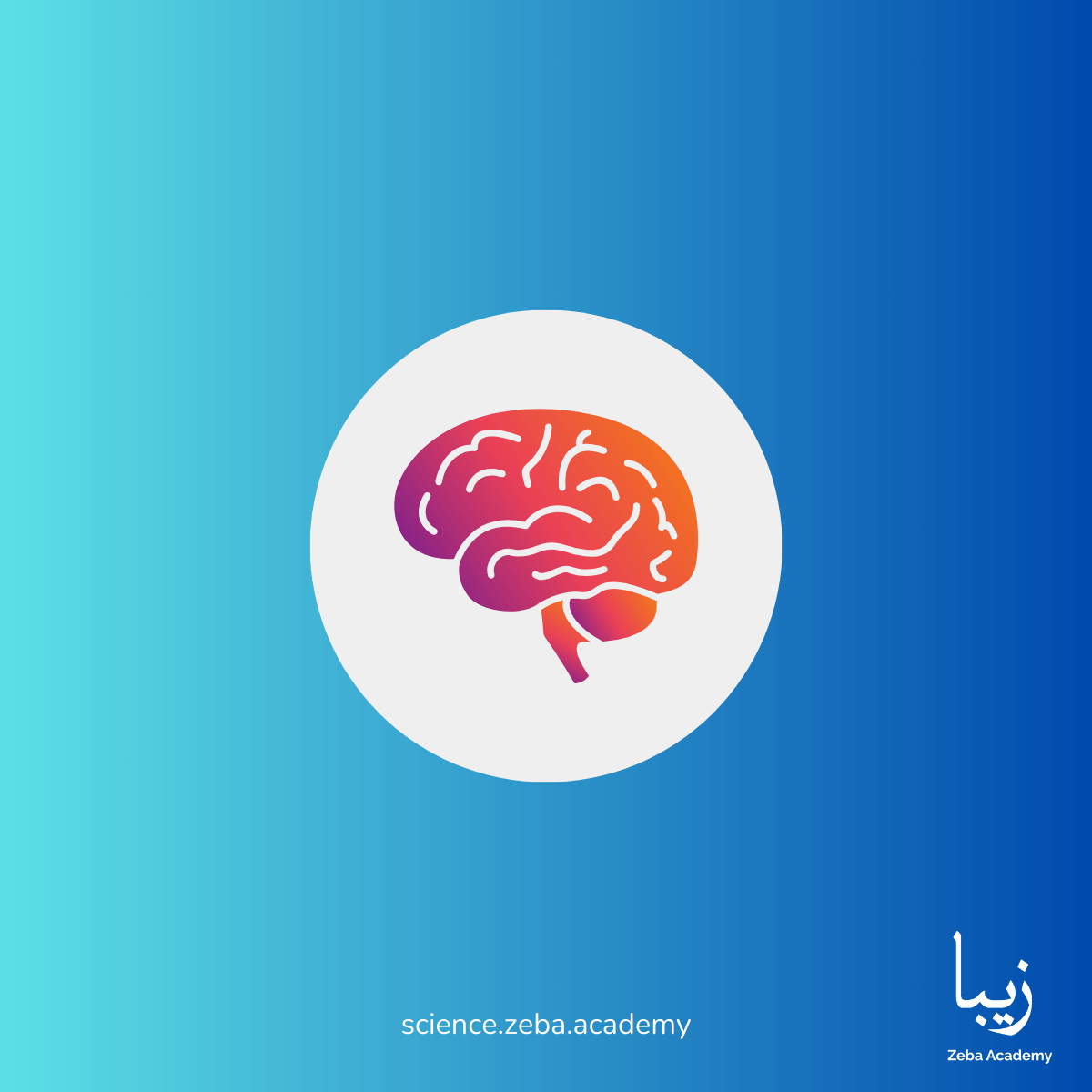Neuroplasticity: The Brain’s Remarkable Ability to Rewire Itself
The human brain, an intricate web of neurons and synapses, is often described as the command center of the body. One of its most fascinating capabilities is neuroplasticity—the ability to reorganize itself by forming new neural connections throughout life.
This phenomenon challenges the long-held belief that the brain’s structure is fixed and unchanging after a certain age. Neuroplasticity underscores the brain’s adaptability and capacity for growth, opening up new possibilities for understanding cognitive function, rehabilitation, and education.
Neuroplasticity
Neuroplasticity, also known as brain plasticity or neural plasticity, refers to the brain’s ability to adapt and reorganize itself by forming new neural connections. This dynamic process occurs in response to learning, experience, and environmental stimuli, allowing the brain to continuously modify its structure and function.
Significance of Neuroplasticity in Cognitive Science
The recognition of neuroplasticity has revolutionized the field of cognitive science. It challenges traditional notions that the brain is a static organ and highlights its incredible malleability. Understanding neuroplasticity is crucial for unraveling the mysteries of learning, memory, and emotional regulation. Moreover, it has profound implications for cognitive rehabilitation and the treatment of neurological disorders.
Historical Perspective on Understanding Brain Plasticity
The concept of neuroplasticity is not a recent discovery. Early observations by scientists like William James and Santiago Ramón y Cajal hinted at the brain’s ability to adapt. However, it was in the latter half of the 20th century that research, particularly by Canadian psychologist Donald Hebb, laid the groundwork for our modern understanding of synaptic plasticity—the foundational mechanism of neuroplasticity.
How Neuroplasticity Works
One of the marvels of neuroplasticity lies in its ability to dynamically shape the brain’s structure and function, driven by intricate mechanisms of synaptic and structural plasticity.
Synaptic Plasticity
At the heart of neuroplasticity lies synaptic plasticity, the ability of synapses to strengthen or weaken over time. Synapses, the junctions between neurons, facilitate communication through the transmission of neurotransmitters. Mechanisms such as long-term potentiation (LTP) and long-term depression (LTD) are key players in synaptic plasticity, shaping the strength and efficiency of neural connections.
Role of Synapses in Neural Communication
Synapses act as bridges between neurons, enabling the transmission of electrical signals. When neurons communicate frequently, the synapses between them strengthen, promoting more efficient signal transmission. This phenomenon is fundamental to learning and memory, as the strengthening of specific neural pathways corresponds to the retention of information.
Mechanisms of Synaptic Plasticity
Long-term potentiation involves the persistent strengthening of synapses after repeated stimulation, enhancing the likelihood of signal transmission. Conversely, long-term depression weakens synapses, reducing the efficacy of signal transmission. These mechanisms, occurring at the molecular and cellular levels, underpin the adaptability of the brain in response to experiences and stimuli.
Structural Plasticity
In addition to synaptic changes, structural plasticity involves alterations in the physical structure of neurons. This includes the formation of new dendritic spines, the branching structures that receive signals from other neurons. The creation of these spines allows for the establishment of new connections, contributing to the overall rewiring of neural networks.
Changes in Neuronal Structure
Neurons undergo structural changes in response to learning and environmental stimuli. Neurogenesis, the generation of new neurons, primarily occurs in the hippocampus, a region associated with learning and memory. Additionally, dendritic branching and the formation of new synapses contribute to the dynamic nature of the brain’s architecture.
Factors Influencing Neuroplasticity
The factors that play an essential role in influencing neuroplasticity are:
Age and Critical Periods
While neuroplasticity is a lifelong phenomenon, the degree to which the brain can reorganize itself may vary with age. Critical periods, sensitive developmental phases during which the brain is highly responsive to specific stimuli, highlight the importance of early experiences in shaping neural circuits. However, research suggests that even in adulthood, the brain retains a remarkable degree of plasticity.
Environmental Stimuli
The environment plays a crucial role in shaping neuroplasticity. Enriched environments, characterized by diverse sensory and cognitive stimulation, have been shown to enhance synaptic plasticity and promote the formation of new neurons. Conversely, impoverished environments may limit neural growth and connectivity. Educational experiences, intellectual challenges, and exposure to novel stimuli all contribute to a rich and stimulating environment that fosters neuroplasticity.
Learning and Education
The relationship between neuroplasticity and learning is reciprocal. Learning experiences drive changes in neural connectivity, while the brain’s plasticity facilitates the acquisition of new information and skills. Understanding the interplay between learning and neuroplasticity has significant implications for educational strategies, emphasizing the importance of engaging and dynamic learning environments.
Enriched Environments
Studies with animals, particularly rodents, have demonstrated the profound impact of enriched environments on brain plasticity. Exposure to stimulating environments with toys, social interaction, and varied sensory experiences leads to increased neurogenesis, synaptic plasticity, and overall cognitive enhancement. These findings suggest potential interventions for cognitive disorders or age-related cognitive decline through environmental enrichment.
Physical Exercise and Neuroplasticity
Physical exercise has emerged as a powerful modulator of neuroplasticity. Regular aerobic exercise has been linked to increased hippocampal volume, enhanced synaptic plasticity, and improved cognitive function. The molecular mechanisms involved include the release of neurotrophic factors, such as brain-derived neurotrophic factor (BDNF), which promote the growth and survival of neurons. The intersection of physical activity and neuroplasticity opens avenues for interventions to promote brain health across the lifespan.
Neural Rehabilitation and Plasticity
In cases of neurological injury or trauma, such as stroke or brain injury, neural rehabilitation leverages neuroplasticity to promote recovery. Targeted rehabilitation exercises and interventions capitalize on the brain’s ability to rewire itself, fostering the development of alternative neural pathways to compensate for damaged regions. Understanding the principles of neuroplasticity is integral to designing effective rehabilitation programs.
In the journey through the intricacies of neuroplasticity, we have explored its definition, mechanisms, and the myriad factors that influence this dynamic process. The brain’s plasticity, once thought to be confined to early development, is now recognized as a lifelong phenomenon that holds promise for cognitive enhancement, rehabilitation, and educational interventions.
Neuroplasticity and Cognitive Function
Neuroplasticity emerges as the orchestrator of cognitive symphony, influencing memory, learning, adaptation, and emotional regulation, showcasing the brain’s remarkable ability to continually refine its cognitive prowess.
Cognitive Function and Memory Formation
One of the most intriguing aspects of neuroplasticity is its profound impact on cognitive function, particularly in the realms of memory formation and recall. Synaptic plasticity, through mechanisms like long-term potentiation, is integral to the consolidation of memories. The strengthening of synapses facilitates the encoding and retrieval of information, highlighting the dynamic interplay between neuroplasticity and cognitive processes.
Learning and Adaptation
Neuroplasticity underpins the brain’s capacity to learn and adapt to new information and experiences. As individuals engage in learning activities, whether acquiring a new skill or gaining knowledge, synaptic connections adjust to accommodate the increased neural activity. This adaptability enables the brain to optimize its circuitry for efficient information processing, supporting lifelong learning and skill acquisition.
Emotional Regulation
The relationship between neuroplasticity and emotional regulation is a burgeoning area of research. Structural changes in the amygdala, a brain region central to emotion processing, have been observed in response to emotional experiences. Understanding how the brain rewires itself in response to emotions has implications for mental health interventions and the treatment of mood disorders. Neuroplasticity provides a window into the neural mechanisms underlying emotional resilience and well-being.
Recovery from Brain Injury
Neuroplasticity plays a pivotal role in the recovery process following brain injury. When a specific brain region is damaged, the surrounding areas can undergo structural and functional changes to compensate for the lost functions. Rehabilitation strategies harness neuroplasticity to encourage the development of alternative neural pathways, promoting functional recovery. This adaptability is particularly evident in cases where individuals relearn motor skills or regain cognitive abilities after traumatic brain injuries.
Applications and Implications
From personalized rehabilitation to transformative educational strategies, the applications of neuroplasticity offer a paradigm shift in harnessing the brain’s adaptability, revolutionizing therapy, education, and technology.
Cognitive Rehabilitation
The understanding of neuroplasticity has transformed cognitive rehabilitation strategies. In cases of brain injury, stroke, or neurodegenerative disorders, rehabilitation programs are designed to capitalize on the brain’s adaptive capacity. Through targeted exercises and interventions, individuals can retrain their brains, fostering the development of new connections and improving cognitive function. This personalized approach to rehabilitation highlights the potential for tailored interventions based on the principles of neuroplasticity.
Therapeutic Approaches
Neuroplasticity has paved the way for innovative therapeutic approaches in the field of mental health. Cognitive Behavioral Therapy (CBT), for example, leverages the brain’s plasticity to restructure thought patterns and behaviors associated with mental health conditions. The malleability of neural circuits allows for the modification of maladaptive patterns, offering hope for individuals grappling with conditions like anxiety, depression, and post-traumatic stress disorder.
Neurorehabilitation
In the realm of physical rehabilitation, neuroplasticity-driven interventions have shown promise. Robotics, virtual reality, and brain-computer interfaces are being utilized to create targeted rehabilitation programs that enhance motor skills and coordination. These technologies provide real-time feedback, promoting neuroplastic changes that contribute to more effective recovery and improved quality of life for individuals with motor impairments.
Cognitive Behavioral Therapy
Cognitive Behavioral Therapy is a therapeutic approach that aligns with the principles of neuroplasticity. By addressing negative thought patterns and behaviors, CBT aims to rewire the brain’s response to stressors and challenges. Neuroplasticity allows individuals to develop new, healthier cognitive patterns, leading to lasting improvements in mental well-being.
Educational Strategies
The integration of neuroplasticity into educational strategies has transformative implications for learning environments. Recognizing the brain’s adaptability, educators can design curricula that capitalize on the plastic nature of neural circuits. Incorporating active learning, experiential activities, and interactive teaching methods enhances neuroplasticity, optimizing the learning experience for students.
Incorporating Neuroplasticity in Teaching
Educators can incorporate neuroplasticity principles into teaching practices by emphasizing experiential learning, varied instructional methods, and opportunities for student engagement. This approach not only enhances the learning experience but also contributes to the long-term retention of information.
Educational Interventions for Neurological Disorders
Understanding neuroplasticity is crucial in developing educational interventions for individuals with neurological disorders. Tailoring educational approaches to accommodate the unique cognitive profiles of individuals with conditions such as ADHD or dyslexia can enhance learning outcomes and promote academic success.
Challenges and Future Directions
As we navigate the intricacies of neuroplasticity, addressing ethical considerations and understanding its limitations, the future promises exciting advances, pushing the boundaries of neuroscience research and personalized interventions.
Limitations of Neuroplasticity
While neuroplasticity offers remarkable potential, it is essential to acknowledge its limitations. The degree of plasticity may vary among individuals, and not all neural circuits exhibit the same level of adaptability. Understanding these limitations is crucial for realistic expectations in therapeutic and educational interventions based on neuroplasticity.
Ethical Considerations
As the field of neuroplasticity research advances, ethical considerations come to the forefront. Manipulating the brain’s plasticity for cognitive enhancement or therapeutic purposes raises questions about consent, privacy, and the potential unintended consequences of interventions. Striking a balance between the benefits of neuroplasticity-driven approaches and ethical considerations is a critical aspect of future research.
Potential Advances in Neuroplasticity Research
The future of neuroplasticity research holds exciting possibilities. Advances in imaging technologies, such as functional magnetic resonance imaging (fMRI) and optogenetics, offer unprecedented insights into the real-time dynamics of neural circuits. These tools enable researchers to explore the intricacies of neuroplasticity at the molecular, cellular, and systems levels, opening new avenues for targeted interventions and personalized treatments.
Conclusion
In delving into the intricate realm of neuroplasticity, we have unveiled the astonishing capacity of the human brain to adapt, rewire, and reshape itself throughout life. From the foundational understanding of synaptic and structural plasticity to the exploration of factors influencing this dynamic process, our journey has illuminated the far-reaching implications of neuroplasticity across various domains. As we conclude, we reflect on the profound impact of neuroplasticity on cognitive function, rehabilitation, education, and the challenges and future directions that lie ahead.
Neuroplasticity, once considered a phenomenon confined to early development, is now recognized as a lifelong process that continues to shape our brains in response to experiences, learning, and environmental stimuli. The intricate dance of synaptic plasticity, with its mechanisms of long-term potentiation and long-term depression, underscores the adaptability of neural connections. Concurrently, structural plasticity allows for the physical reorganization of neurons and the formation of new connections, contributing to the dynamic landscape of the brain’s architecture.
Our exploration of neuroplasticity’s influence on cognitive function has revealed its pivotal role in memory formation, learning, adaptation, and emotional regulation. Synaptic plasticity, as a fundamental mechanism, enhances the encoding and retrieval of memories, providing insights into the cognitive processes that define our experiences. The brain’s adaptability enables us to learn new skills, acquire knowledge, and navigate the complexities of our ever-changing environment. Moreover, the interplay between neuroplasticity and emotional regulation opens avenues for understanding and addressing mental health conditions, offering hope for therapeutic interventions that leverage the brain’s own mechanisms for healing.
The applications of neuroplasticity span diverse fields, with transformative implications for rehabilitation, therapy, and education. In the realm of cognitive rehabilitation, personalized interventions capitalize on the brain’s adaptive capacity to promote recovery after injury or neurological disorders. Therapeutic approaches, such as Cognitive Behavioral Therapy, harness neuroplasticity to restructure thought patterns and behaviors, offering effective interventions for mental health conditions. Moreover, the integration of neuroplasticity principles into educational strategies enhances learning environments, catering to the dynamic nature of the brain’s plasticity.
Looking forward, the future of neuroplasticity research holds exciting possibilities. Advances in imaging technologies provide unprecedented insights into the real-time dynamics of neural circuits, offering a deeper understanding of the molecular and cellular mechanisms driving neuroplasticity. These developments pave the way for targeted interventions and personalized treatments, heralding a new era in neuroscience.
References
- Bliss, T. V., & Collingridge, G. L. (1993). A synaptic model of memory: long-term potentiation in the hippocampus. Nature, 361(6407), 31-39.
- Kolb, B., & Gibb, R. (2011). Brain plasticity and behaviour in the developing brain. Journal of the Canadian Academy of Child and Adolescent Psychiatry, 20(4), 265–276.
- Kleim, J. A., & Jones, T. A. (2008). Principles of experience-dependent neural plasticity: implications for rehabilitation after brain damage. Journal of Speech, Language, and Hearing Research, 51(1), S225–S239.
- May, A. (2011). Experience-dependent structural plasticity in the adult human brain. Trends in Cognitive Sciences, 15(10), 475–482.
- Pascual-Leone, A., Amedi, A., Fregni, F., & Merabet, L. B. (2005). The plastic human brain cortex. Annual Review of Neuroscience, 28, 377-401.
- Rosenzweig, M. R., & Bennett, E. L. (1996). Psychobiology of plasticity: effects of training and experience on brain and behavior. Behavioural Brain Research, 78(1), 57-65.
- Zatorre, R. J., Fields, R. D., & Johansen-Berg, H. (2012). Plasticity in gray and white: neuroimaging changes in brain structure during learning. Nature Neuroscience, 15(4), 528–536.


